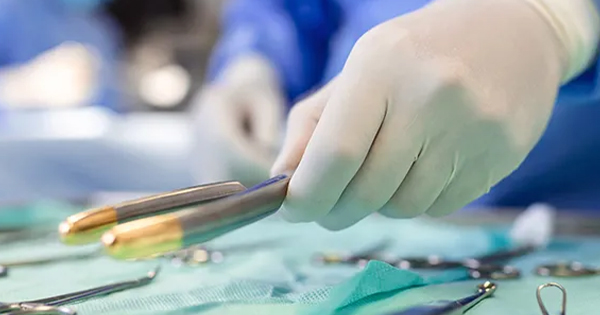1. Identify, assess and mitigate risk factors early
The pathway to a diabetic foot ulcer and subsequent amputation is well-mapped, starting with neuropathy, ischaemia, infection and a preventable sentinel event in 86% of cases (Pecoraro et al, 1990). Prevention of amputation is most successful with early recognition of associated risk factors when a patient presents with a diabetic foot ulcer, the most common precursor to non-traumatic lower extremity amputation (LEA). Risk factors (RF) include peripheral arterial disease, infection, end-stage renal disease, Charcot arthropathy, and poor glycemic control. The characteristics of the presenting DFU (depth, infection, duration), combined with the recognised RF, can help stratify the patient’s risk for amputation and inform the care team and plan of care. Classification systems exist and provide structure and objectivity to the clinical team’s risk assessment. While the Wagner wound classification system is one of the most commonly used models, it focuses on the wound and does not incorporate the ‘system’ (environment/person’s health status), which strongly influences the outcome. WIFI and Texas Scoring are models that score the wound, as well as the environment in which the wound exists (Mills et al, 2014). It is beyond the scope of this article to discuss these systems in depth, but it would serve the clinician well to explore options for their team to increase success and focus on early intervention.
2. A multifactorial problem requires a multidisciplinary approach
One of the critical components of successful prevention of amputation is the engagement of a multidisciplinary team. While the members of a given team may vary based on availability, they most commonly include: wound care, nursing, podiatry, physical therapy, certified prosthetist/orthotist (CPO; a clinician who fabricates braces and prosthetics) and vascular surgery. Medical specialists who are often consulted, if not part of the team, include endocrinologists, nephrologists, dieticians and psychologists. If amputation is likely, referral to a clinician or team specialising in amputee care will ensure that the patient and family have adequate information on what follows the surgery. Many settings have amputee teams. If not, seek a physical therapist, CPO or other clinicians with expertise to help guide your patient’s experience. Early recognition of risk and referral to a tertiary care centre may help reduce the known disparity of services and higher amputation rates for patients in underserved areas.
3. Emphasise the importance of diabetes screening, diabetes education, and blood glucose management
Over 150,000 non-traumatic LEA occur in the US annually, with 82% in patients with diabetes mellitus (DM) (Molina and Faulk, 2022). As the incidence and prevalence of DM increase, the number of amputations also rises (Geiss et al, 2019) The impact of COVID-19 on diabetes management is not insignificant. In the UK, almost 80,000 routine tests for monitoring DM were missed due to COVID. Surveillance testing was also delayed or canceled, potentially resulting in delayed recognition and management of new-onset DM (Holland et al, 2021).
4. Consider the presence of mixed arterial and venous disease
The trajectory of wound healing may vary according to many factors; generally speaking, it can be useful to refer to the guideline that a 50% reduction in size in 4 weeks can be expected if all known and treatable variables have been addressed (Coerper et al, 2009). If wound healing appears delayed, it is worthwhile to consider other, less common pathologies. Skin cancers may present as non-healing ulcers and long-standing ulcers (>1yr) can evolve to squamous or basal cell carcinoma (known as Marjolin’s ulcers). There are other diseases with cutaneous manifestations of ulcers (bullous pemphigoid, pyoderma gangrenosum) whose appearance can deceive even the most seasoned clinician. Unexplained delays in healing should trigger further evaluation with consideration for biopsy.
5. Minor amputation may be a solution — or create further problems
Minor amputations (toe, partial forefoot) can represent an effective intervention resulting in the timely resolution of a wound that may be difficult to heal due to location (tip of the toe) or weight-bearing challenges. These challenging ulcers often result in prolonged healing times which promote patient deconditioning, contracture formation, general weakness and reduction in mobility. There is also a recognised situational or reactive depression that may occur when we restrict an individual’s ambulation and activity. One potential adverse outcome from minor amputation is the ‘transfer’ ulcer which results from altered foot biomechanics following minor amputation. The resulting DFU can be as problematic as the primary DFU was and warrants continued surveillance and appropriate orthotic intervention.
6. Clarify goals and values—palliative care is an option
If a patient is in a situation where the DFU is not likely to heal and amputation is being discussed, it is helpful to pause and consider palliative care. If the condition is not a limb- or life-threatening but is not likely to heal, the care team may consider discussing chronic wound care without the expectation of healing as a form of palliative care. The focus would then be on reducing the complexity and cost of care, minimising the risk of infection and avoiding hospitalisation. Often, the patient’s total picture is such that other comorbidity conditions may be in the forefront and already have limited mobility but maintaining limb function for transfers and household ambulation has benefits.
7. Decatastrophising the “A” word — initiate candid conversations
Early introduction of the “A” word can help introduce amputation as a possible outcome and help introduce the concept as a possible solution to the existing health problem. Patients are well served with realistic discussions of their current status and likely outcome vs. ‘wishful thinking’ because a clinician is uncomfortable with discussing amputation. Adjustment to a major amputation includes physical, emotional and psychological dimensions. Involvement with behavioural/mental health specialists, peer counsellors and specialised teams early on help patients move along the continuum of recovery in the healthiest way possible.
8. Appreciate the cost of amputation
Amputation results in direct and indirect costs and societal and personal impacts. In the first year following amputation, direct costs include surgery, hospitalisation, rehabilitation and prosthetic fabrication. Indirect costs include loss of work income, house modifications, and social services, to name a few. The psychological impact of change in body image and function, the grief of limb loss, and adjustment to disability take its toll emotionally on the patient and family.
9. Diabetic foot ulcers are not ‘one and done’
The recurrence rate of DFU is approximately 40% at 1 year and up to 65% in 5 years (Armstrong et al, 2017). Ulceration at other locations on the same foot or contralateral foot are frequent as well. Recurrence is often related to both the physical and psychological characteristics of the individual. Education and footwear for people with diabetes have long been the mainstay of preventing of recurrence with less than the desired effect (see rates above). Newer technologies are proving to be effective in identifying the early stages of a potential breakdown. The temperature mapping system involves the patient stepping on the platform each morning, much like a scale. Remote monitoring follows trends of temperatures of the foot, and with AI, the patient and then the provider is notified of the concerning trend. Initial interventions can include a reduction of activity for several days, checking the adequacy of footwear and orthotics, and scheduling a clinic appt for evaluation. Addressing a haemorrhagic callus takes far less time and resources than a full-blown DFU. Early studies indicate that this modality is proving beneficial (Fryckberg et al, 2017).
10. Recognise diabetic foot ulcer is a continuum of pathology rather than a single health problem.
Literature suggests that we consider a healing DFU in ‘remission’ rather than ‘healed’ and that patients are not discharged from our care but rather are enrolled in ongoing surveillance with an eye to early recognition and intervention (Armstrong et al, 2020). Successful management of a DFU may prevent a major LEA. Major-limb amputation is associated with increased mortality and morbidity. The 5-year mortality rate is reported between 63.2% (Meshkin et al, 2021) and exceeding 70% (Armstrong et al, 2017). It is uncertain if amputation hastens death or serves as a marker of underlying disease burden (Armstrong et al, 2017). Understanding that the same disease processes that led to DFU and/or amputation are still active and not resolved with either healing the DFU or completing the amputation helps to develop an approach to these patients that is lifelong and extends beyond the episode of care associated with the initial encounter.
Conclusion
While amputation of a lower extremity often has a devastating impact on the individual, the effects can be mitigated to a degree by clarifying goals, engaging in candid conversations and developing an effective but realistic care plan. In terms of prevention, screening, education, early identification of risk factors and effective blood glucose management are all of huge importance, as well as incorporating a multidisciplinary approach.





